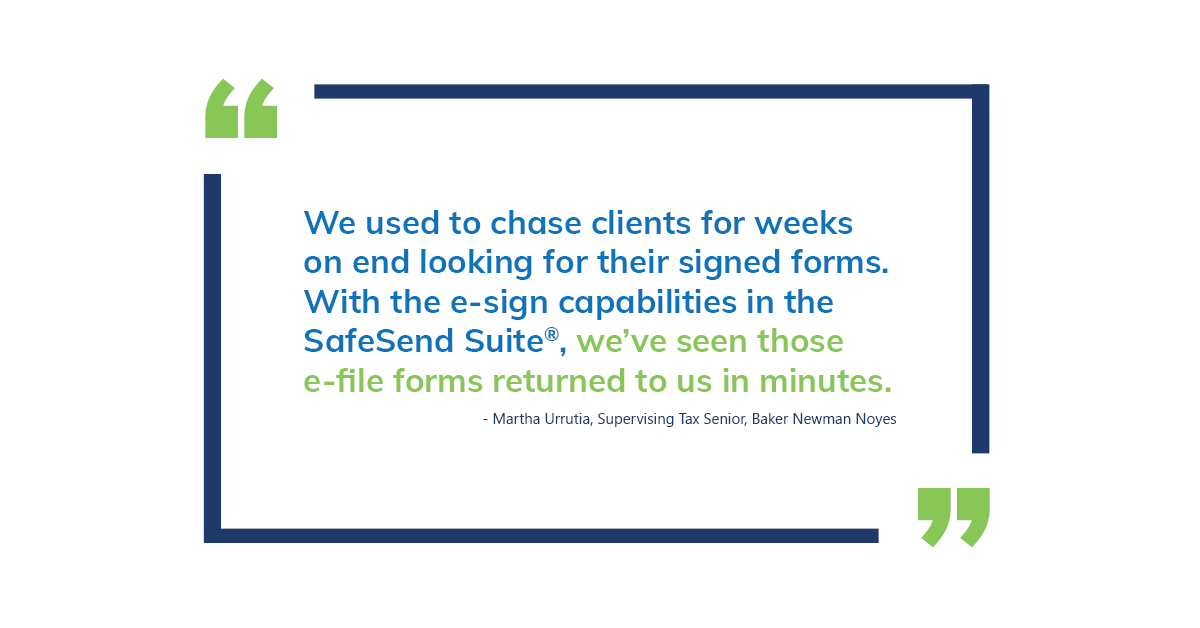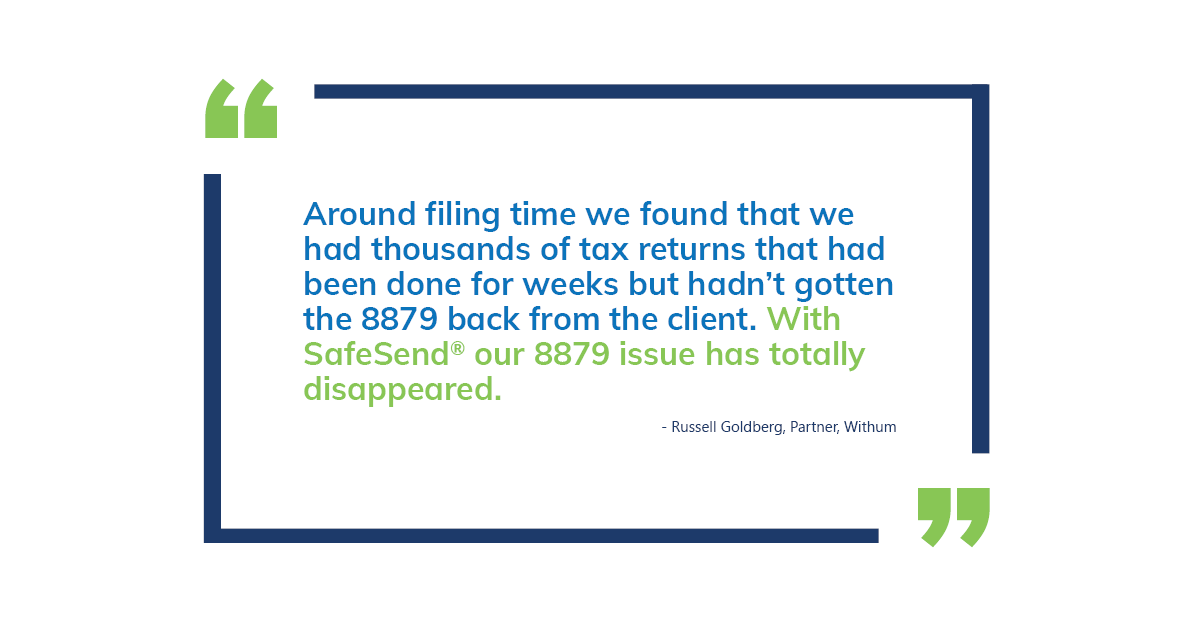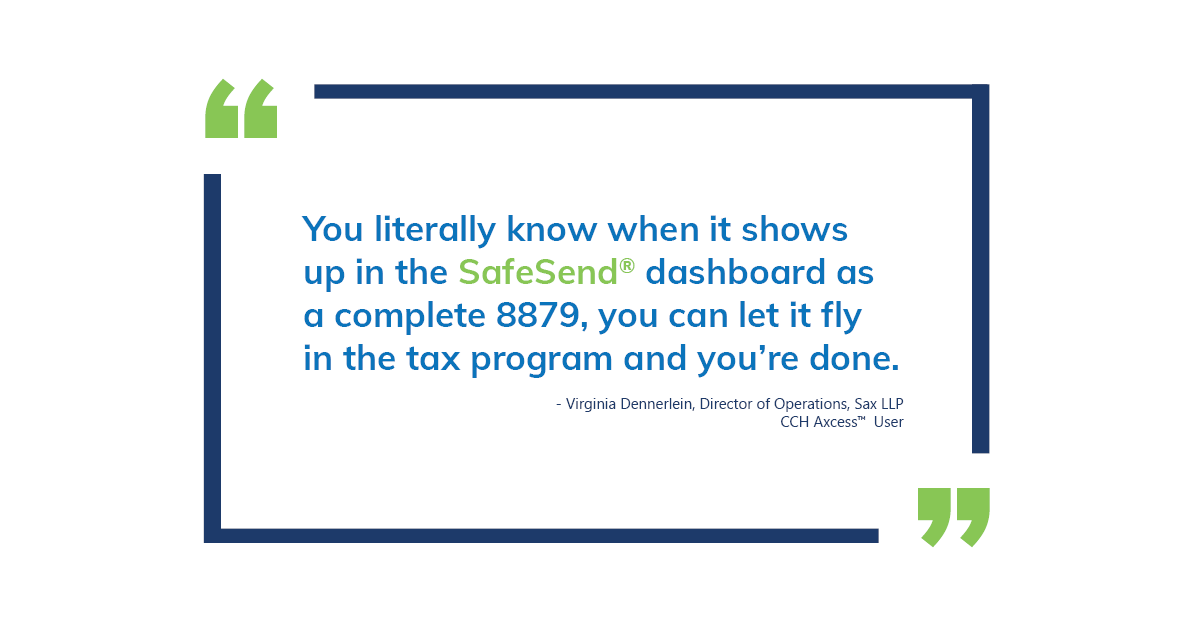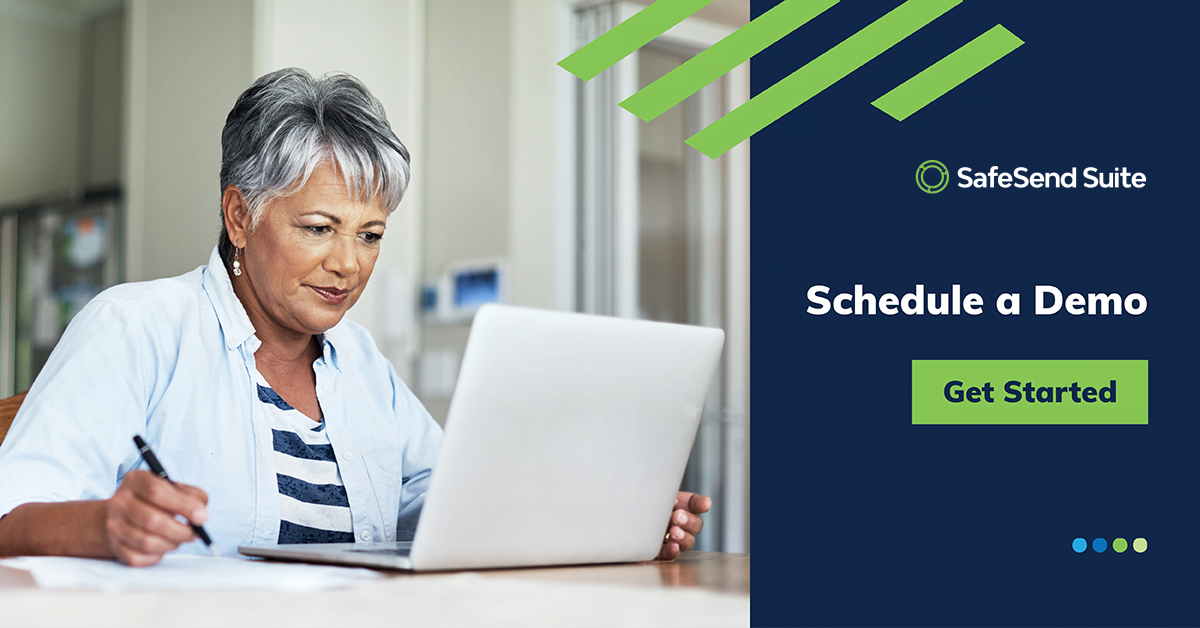The IRS e-file Signature Authorization Form 8879 is a document firms need from every client to file their taxes. In an age of instant fulfillment where even groceries can be ordered with same-day delivery, it seems only reasonable that firms get signed 8879s back in less than a day. Yet, many firms still struggle when it comes to getting clients to sign and return this essential form.
Scrambling for Completed 8879s
IRS Form 8879 is a simple document, but waiting for clients to sign and return the form can cause a bottleneck. E-sign technology has made it much easier to get a signature on a document. However, some facets of the traditional tax filing methods still used can slow the process and cause a delay in signing and returning IRS Form 8879 in a timely manner.
As tax deadlines loom, admin teams must scramble to contact clients, reminding them to sign and return Form 8879 so their taxes can be e-filed. Unfortunately, this flurry of phone calls and emails isn’t something that needs to be added to the plates of a staff who is already stretched thin.

Manual Tasks Associated with Traditional E-Sign Solutions for IRS Form 8879
One area that can bog down the process is the manual task of uploading and placing signature blocks. With traditional e-sign vendors who offer e-sign solutions for any use, the signature blocks must be physically placed — and the time it takes to manually place signature blocks on hundreds or thousands of 8879s quickly adds up.
Sending Form 8879 to clients separately is yet another factor that can slow the process of firms receiving the signed form in a timely manner. But traditional e-signature solutions are designed for only that — sending documents for e-sign.
Firms sending tax returns through encrypted email or a file-sharing system, then sending IRS Form 8879 in a separate transaction, aren’t communicating with their clients in the most effective manner. When a taxpayer receives a separate email, it has a greater likelihood of getting overlooked, going to their spam or junk folder, or causing confusion as to what the document is and why they should be signing it.
The Tax and Accounting E-Sign Journey
SafeSend® took a very different approach to the underlying core technology behind e-signing 8879s. They assessed the available e-sign technology and asked, “How do we identify and automatically place who — taxpayer, spouse and ERO — signs where?”
With SignatureFlow®, SafeSend was the first company to bring e-signature specifically to the tax and accounting profession. Originally known as CPA SafeSign, SignatureFlow was created through a partnership with Adobe®. In 2012 — years before the IRS even approved the use of electronic signatures on Form 8879 — SafeSend built a tax and accounting front end on the Adobe e-sign engine. Automating the placement of signature blocks on Form 8879 eliminated the tedious task of placing them manually, saving firms precious time.
Now part of the SafeSend Suite®, SafeSend Signatures™ uses the SignatureFlow technology to not only capture e-signatures, but to mail merge and batch process bulk documents like 8879s and engagement letters at the click of a button.
Listening to Customers Led to Further Innovation
Having an e-sign experience specific to the tax and accounting profession was helpful. “But there was still room for improvement,” explained Steve Dusablon, SafeSend co-founder and Chief Innovation Officer. “Our customers asked, ‘Can’t we send the 8879 along with the tax return so that clients only receive one email and go through a single transaction?’ So we set out to solve the problem.” The result was the multi-year award-winner, SafeSend Returns®, which was released in 2015.
Where E-Signing Form 8879 Falls into the Tax Return Process
The big picture is the tax workflow, and e-signing is a component of that workflow — especially around the tax packages, engagement letters, and specifically IRS Form 8879. The ultimate goal of building SafeSend Returns was not just to automate the tax return assembly and delivery for firms, but to make the entire process so simple for taxpayers that firms receive the e-file forms back in 24 hours.
The process of sending 8879s individually is outside the normal workflow of the tax return process. It creates a separate event that can cause confusion for clients. Sending documents in the natural order that clients review them cuts down on frustration points.
The Top 3 Things to Avoid When Sending Clients IRS Form 8879
Frustration can happen on both the firm and client side when it comes to IRS form 8879. Because the completed and signed form must be received from the taxpayer prior to transmitting the electronic return to the IRS, the 8879 can hold up the tax filing process.

Three habits surrounding delivery of IRS Form 8879 that can slow the process — or bring it to a screeching halt — include:
- Delivering the 8879 in paper form.
- Delivering Form 8879 as a PDF without e-sign.
- Delivering Form 8879 as a separate document.
Paper physically slows the process for the firm due to the manual processes. When clients receive a paper document, they have to sign it, scan it, and email it or physically mail it back to the firm. A PDF version may be electronic in nature, but when it doesn’t include an e-signature capability, it actually adds steps for your client because they must print it to sign, then scan it to return via email or send the physical document through the mail.
Sending 8879s the same way you deliver your collaborative documents with clients promotes consistency. Clients appreciate knowing what to look for from your firm. Teaching clients one process is much easier than sending them documents in multiple formats. Clear communication with your clients about the e-sign solution and what’s expected from them in the process makes them part of the new workflow and eliminates potential hangups.
Giving your clients the tools to make it simple for them to complete the tax return process is a key component in receiving the 8879s back faster than traditional delivery methods, and they’re able to get through the process quickly.
Give Form 8879 Completion Rates a Boost from the Firm Side
Providing staff with a system that removes the tedious, manual task of dragging and dropping signature boxes speeds up the process. Additionally, eliminating other roadblocks — like the need for two separate email addresses when sending Form 8879 for signature from both taxpayer and spouse — saves time and headaches on the firm side. The e-sign solution in the natural workflow of the SafeSend Suite allows an 8879 that requires two unique signatures to be sent to one email address — whether only one spouse’s email address is known or if there is a shared email address!
The reporting feature in the SafeSend Suite of products gives your team in-depth data and provides the ability to easily see who has signed a document, who hasn’t, and to send reminders asking clients to complete the desired task.
Implement SafeSend Signatures to get Signed 8879 Forms Back in Hours, not Days
Help your clients get through their return in the right order as quickly as possible; send IRS Form 8879 along with the tax return. This makes the most efficient workflow for your client and eliminates much of the confusion that can surround receiving the 8879 as a one-off document.
Eliminate stress for your staff and empower them to file returns efficiently and effectively in a timely manner when they no longer have to wait and wait for Form 8879.

Include IRS Form 8879 Completion Rate in Your Tax Season Evaluation
When evaluating the tax season, consider your firm’s 8879 completion rate. Are you experiencing holdups around the filing process? Does your staff have to chase clients down to get the forms returned? Could your firm benefit from speeding up the 8879 completion rate to be calculated in hours instead of days or weeks? Schedule a demo of the SafeSend Suite and discover first-hand how quickly signed forms can come back and break up that 8879 logjam in your firm’s tax workflow.
Schedule Your SafeSend Suite Demo Today
SafeSend Returns is the flagship solution in the SafeSend Suite and a multi-year winner of the CPA Practice Advisor Technology Innovation Award. SafeSend Returns eliminates the manual, labor-intensive elements many tax departments experience producing client-ready tax returns.
